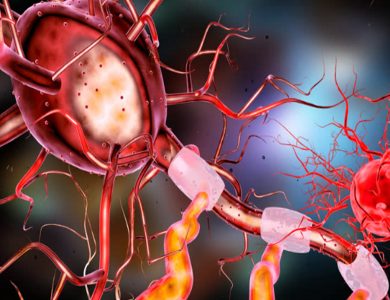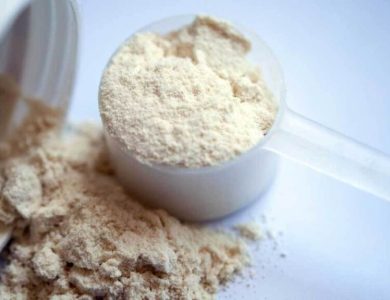Atherectomy is a minimally invasive procedure used to treat peripheral vascular disease (PVD) by removing plaque from the arteries. This procedure is essential for improving blood flow in patients whose arteries have become narrowed or blocked due to the buildup of fatty deposits, known as atherosclerosis. If left untreated, blocked arteries can lead to serious complications, including tissue damage, ulcers, and even the risk of amputation. Understanding how atherectomy works, when it is recommended, and what to expect during and after the procedure can help you make informed decisions about your vascular health.
What is atherectomy?
Atherectomy is a procedure that removes plaque buildup from the arteries to restore normal blood flow. This plaque is made up of fat, cholesterol, calcium, and other substances that stick to the artery walls, causing them to narrow and restrict blood flow. Over time, this can lead to symptoms such as leg pain, numbness, or non-healing wounds, particularly in patients with peripheral vascular disease.
Unlike angioplasty, which uses a balloon to widen the artery, or stenting, which places a small metal mesh tube to hold the artery open, atherectomy physically removes the plaque from the artery. This makes it an effective option for patients whose arteries are particularly calcified or hardened by plaque, or in areas where other treatments may not be suitable.
When is an atherectomy recommended?
Atherectomy is typically recommended for patients with peripheral vascular disease or coronary artery disease who have significant plaque buildup in their arteries. It is especially useful in the following cases:
- Severe Blockages: When the arteries are severely narrowed or blocked, atherectomy may be used to remove the plaque and restore blood flow.
- Calcified Plaque: In cases where the plaque has become calcified (hardened), atherectomy can be a better option than angioplasty because it allows for more precise removal of the blockage.
- Tortuosity or Bends in the Arteries: When the arteries are twisted or have sharp bends, stenting or angioplasty might not be effective. Atherectomy can be performed in these areas to carefully remove the plaque without damaging the surrounding tissue.
- Recurrent Blockages: If a patient has previously undergone angioplasty or stenting but experiences restenosis (re-narrowing of the artery), atherectomy may be used to address the issue.

Types of Atherectomy
There are several different types of atherectomy, each designed to address specific types of plaque or artery conditions:
- Directional Atherectomy: In directional atherectomy, a small rotating blade is used to shave off plaque from the artery walls. The removed plaque is collected in a chamber and removed from the body. This method is particularly effective for removing larger or more focused areas of plaque.
- Rotational Atherectomy: This method uses a tiny, diamond-tipped rotating burr that spins at high speeds to grind away hard, calcified plaque. The small particles of plaque are washed away by the bloodstream. Rotational is commonly used for arteries with heavily calcified plaque that cannot be easily removed with other methods.
- Orbital Atherectomy: Orbital uses a rotating device that moves in an orbital motion, allowing it to sand away plaque evenly along the walls of the artery. This method is especially useful in arteries with irregular or complex plaque buildup.
- Laser Atherectomy: In laser, a laser is used to vaporize the plaque, breaking it down into tiny particles that are safely absorbed by the body. This technique is effective for removing soft plaque and is often used in combination with other atherectomy methods.
What to Expect During the Procedure
Atherectomy is typically performed in a hospital or outpatient setting and involves the use of local anesthesia or mild sedation. The procedure generally follows these steps:
- Preparation: A small incision is made, usually in the groin or arm, to access the artery. A catheter is then inserted into the artery and guided to the site of the blockage using imaging techniques like X-rays or ultrasounds.
- Plaque Removal: Once the catheter reaches the area of blockage, the device is used to remove the plaque. The specific type of atherectomy (directional, rotational, orbital, or laser) will depend on the type and location of the plaque.
- Completion: After the plaque is removed, the blood flow is restored, and the catheter is removed. In some cases, a stent may be placed to help keep the artery open. The incision is closed, and the patient is monitored for a short period before being discharged.
The entire procedure typically takes about one to two hours, and most patients can go home the same day or the next day, depending on their overall health and the complexity of the procedure.
Recovery After Atherectomy
Recovery from atherectomy is usually quick, with most patients able to resume normal activities within a few days. However, it’s important to follow your doctor’s instructions regarding post-procedure care. This may include:
- Rest: Resting for the first 24 to 48 hours after the procedure is recommended to allow your body to recover.
- Medications: Your doctor may prescribe blood thinners or other medications to prevent blood clots and manage risk factors like cholesterol and high blood pressure.
- Lifestyle Changes: To maintain the benefits of the procedure and prevent future blockages, it’s essential to adopt a heart-healthy lifestyle. This includes eating a balanced diet, exercising regularly, quitting smoking, and managing conditions like diabetes, high blood pressure, and high cholesterol.
Follow-up visits with your healthcare provider are crucial to monitor your progress and ensure that the treated arteries remain open.
Risks and Considerations
While atherectomy is generally safe, as with any medical procedure, it carries some risks. Potential complications include:
- Bleeding or Infection: There may be a risk of bleeding or infection at the catheter insertion site.
- Artery Damage: In rare cases, the artery may be damaged during the procedure, requiring additional intervention or surgery.
- Blood Clots: There is a small risk of blood clots forming after the procedure, which can lead to complications like stroke or heart attack.
- Restenosis: In some cases, the artery may re-narrow over time, requiring further treatment.
Your healthcare provider will discuss these risks with you and help determine whether atherectomy is the right option based on your specific condition and medical history.
Conclusion
Atherectomy is an effective and minimally invasive treatment option for patients with peripheral vascular disease or other conditions that cause narrowed or blocked arteries. By removing plaque buildup and restoring blood flow, can relieve symptoms, improve mobility, and reduce the risk of serious complications like tissue damage and amputation.
If you are experiencing symptoms of PVD, such as leg pain, numbness, or non-healing wounds, it’s important to seek medical advice promptly. Early diagnosis and intervention can help prevent the progression of the disease and improve your quality of life. To learn more about and other vascular treatments, explore our comprehensive care services that are designed to address your unique needs.
By understanding your treatment options and working closely with your healthcare provider, you can take proactive steps to manage your vascular health and prevent future complications.




